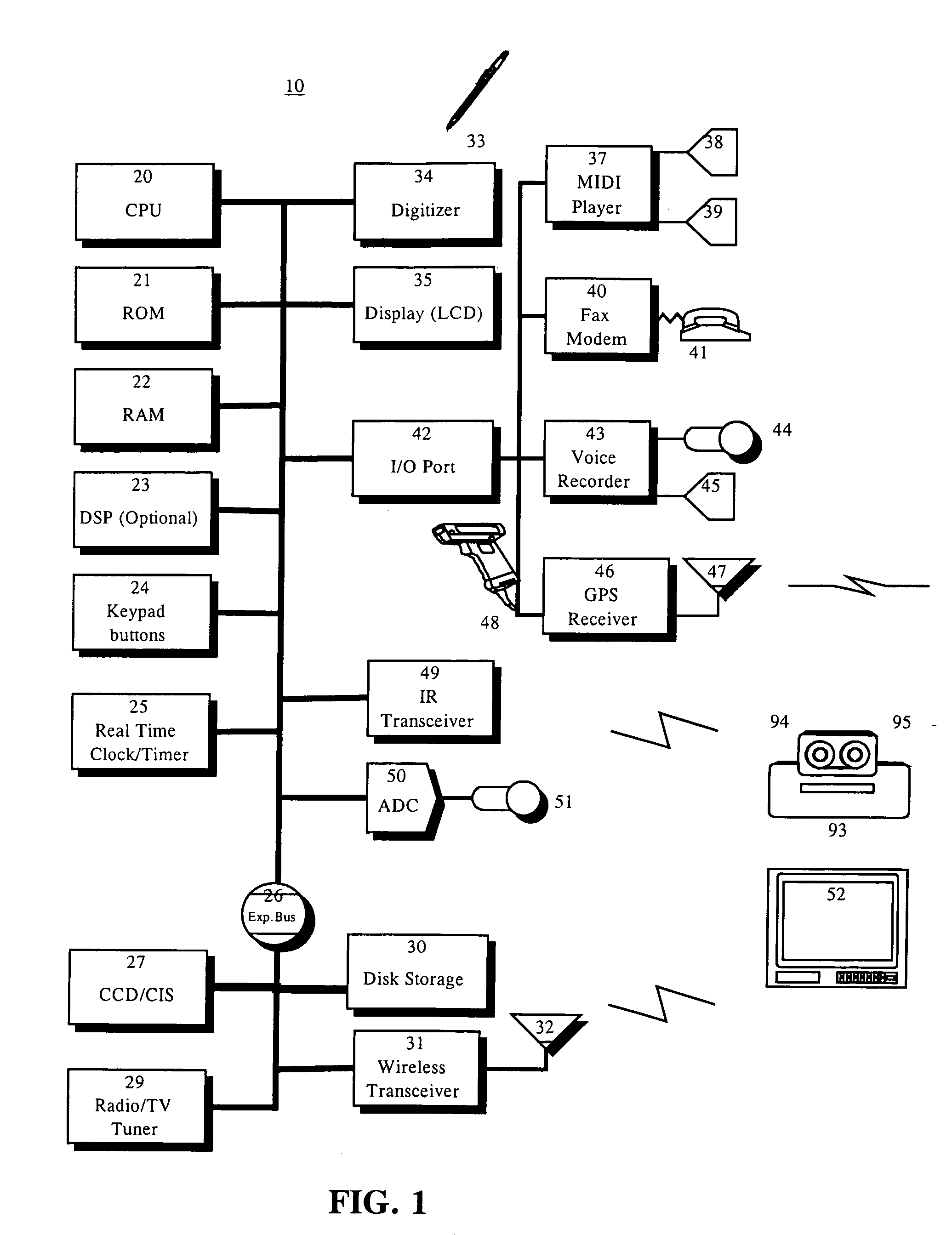Intelligent data retrieval system
a data retrieval system and intelligent technology, applied in the field of intelligent data management system, can solve the problems of partial retrieval of irrelevant articles, inability to capture every file on the target topic with the broadest possible keyword term, and inability to efficiently filter the universe of information available, so as to reduce the cost of data transmission, and facilitate the effect of reducing the number of irrelevant articles
- Summary
- Abstract
- Description
- Claims
- Application Information
AI Technical Summary
Benefits of technology
Problems solved by technology
Method used
Image
Examples
Embodiment Construction
[0050]FIG. 1 illustrates a portable computer system of the present invention for managing data. The computer system is preferably housed in a small, rectangular portable enclosure. Referring now to FIG. 1, a general purpose architecture for entering information into the data management by writing or speaking to the computer system is illustrated. In FIG. 1, a processor 20 or central processing unit (CPU) provides the processing capability for the sketching system of the present invention. The processor 20 can be a reduced instruction set computer (RISC) processor or a complex instruction set computer (CISC) processor. Preferably, the processor 20 is a low power CPU such as the MC68328V DragonBall device available from Motorola Inc.
[0051] The processor 20 is connected to a read-only-memory (ROM) 21 for receiving executable instructions as well as certain predefined data and variables. The processor 20 is also connected to a random access memory (RAM) 22 for storing various run-time ...
PUM
 Login to View More
Login to View More Abstract
Description
Claims
Application Information
 Login to View More
Login to View More - R&D
- Intellectual Property
- Life Sciences
- Materials
- Tech Scout
- Unparalleled Data Quality
- Higher Quality Content
- 60% Fewer Hallucinations
Browse by: Latest US Patents, China's latest patents, Technical Efficacy Thesaurus, Application Domain, Technology Topic, Popular Technical Reports.
© 2025 PatSnap. All rights reserved.Legal|Privacy policy|Modern Slavery Act Transparency Statement|Sitemap|About US| Contact US: help@patsnap.com



